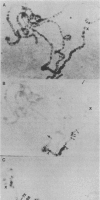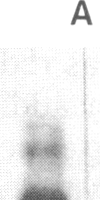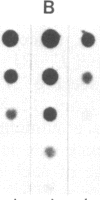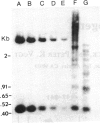Abstract
We have isolated and characterized a dispersed middle repetitive DNA sequence from Drosophila melanogaster that is concentrated on the euchromatic portion of the X chromosome. In situ hybridization of the repeat unit to salivary gland chromosomes shows the sequence is distributed among approximately 10 major and 20 minor X chromosomal sites. Based on DNA sequence analysis of homologous sequences from three different cytogenetic regions, the 372-base-pair repeat unit appears to be (A + T)-rich and noncoding and shows strong sequence conservation among units from different chromosomal regions. The nature and distribution of this sequence are suggestive of the hypothetical X chromosome DNA sequences thought to be involved in the primary establishment of sex determination and dosage compensation in Drosophila.
Full text
PDF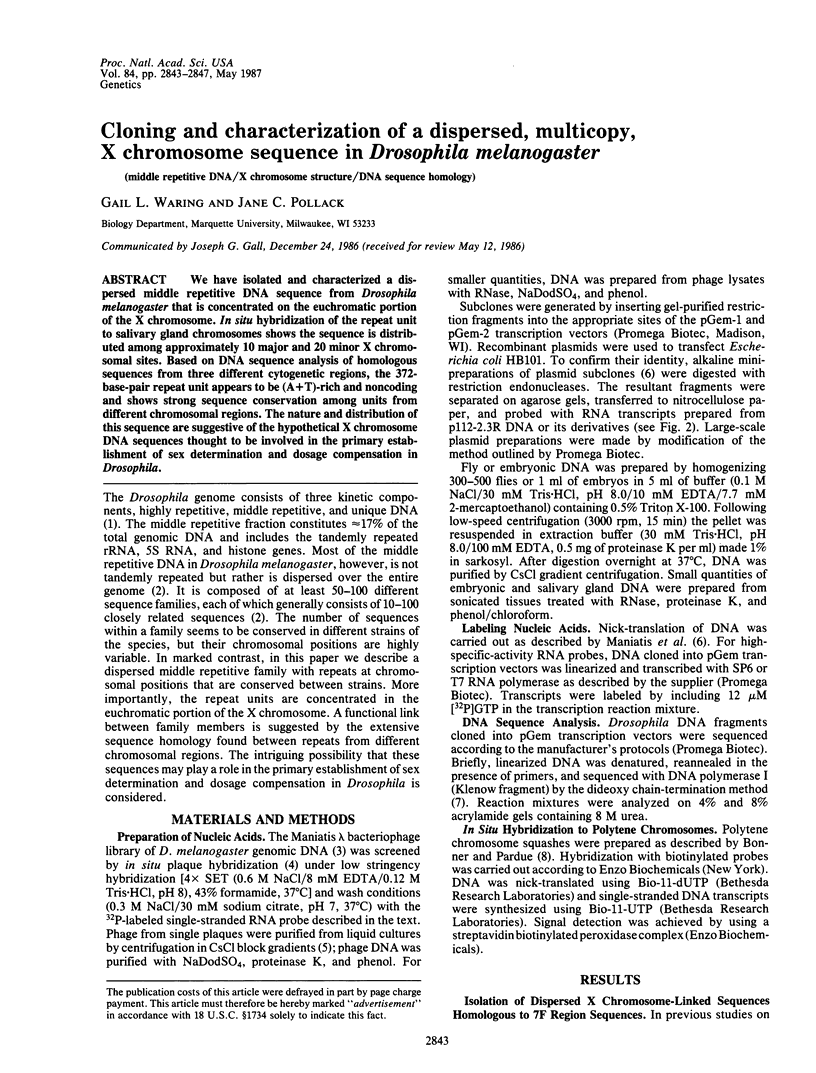
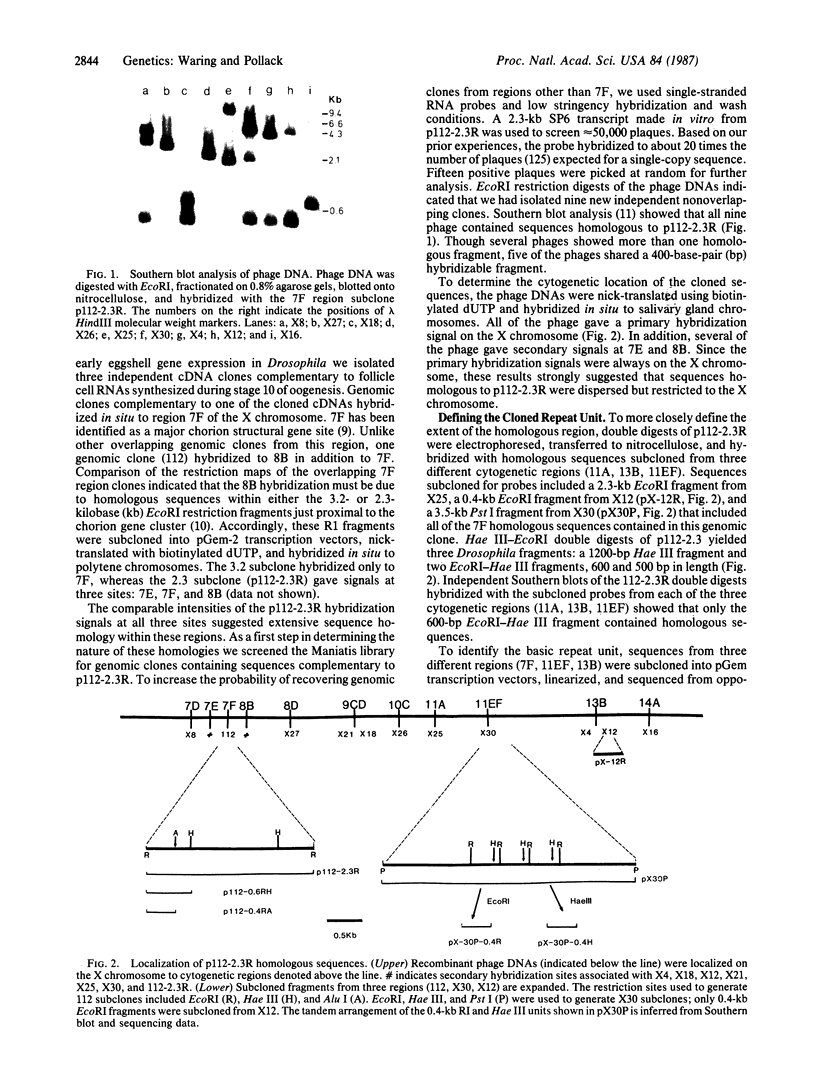
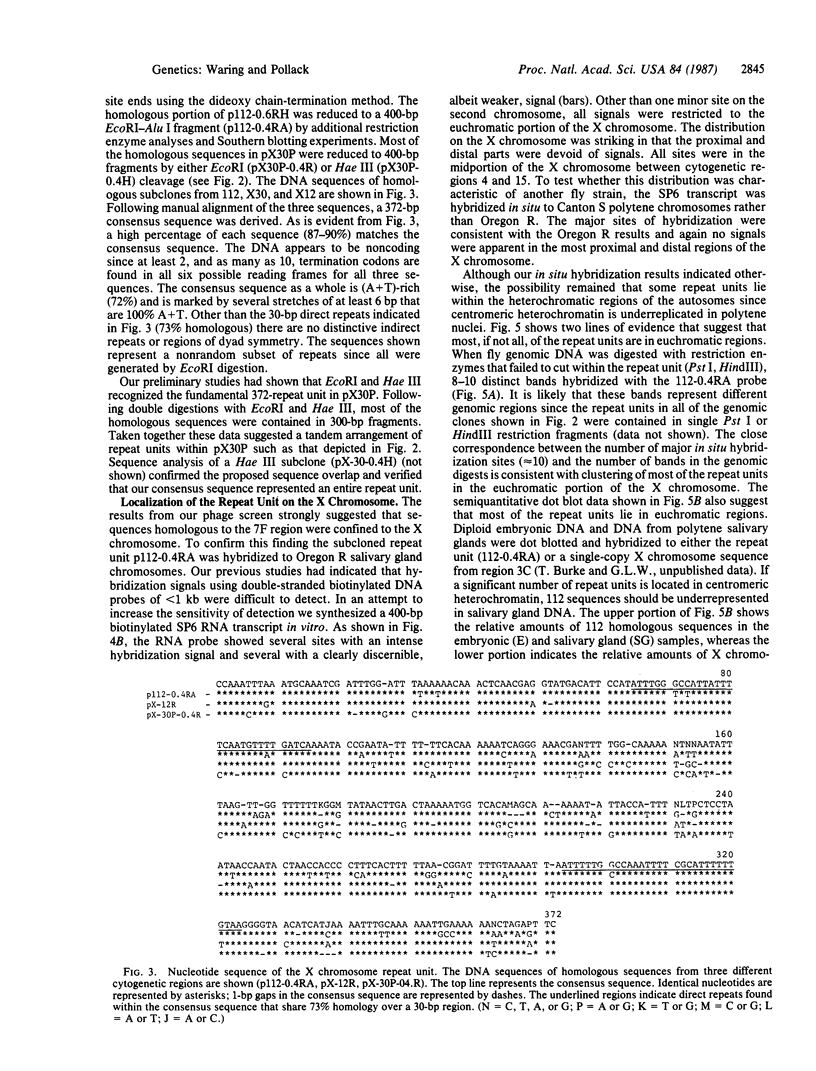
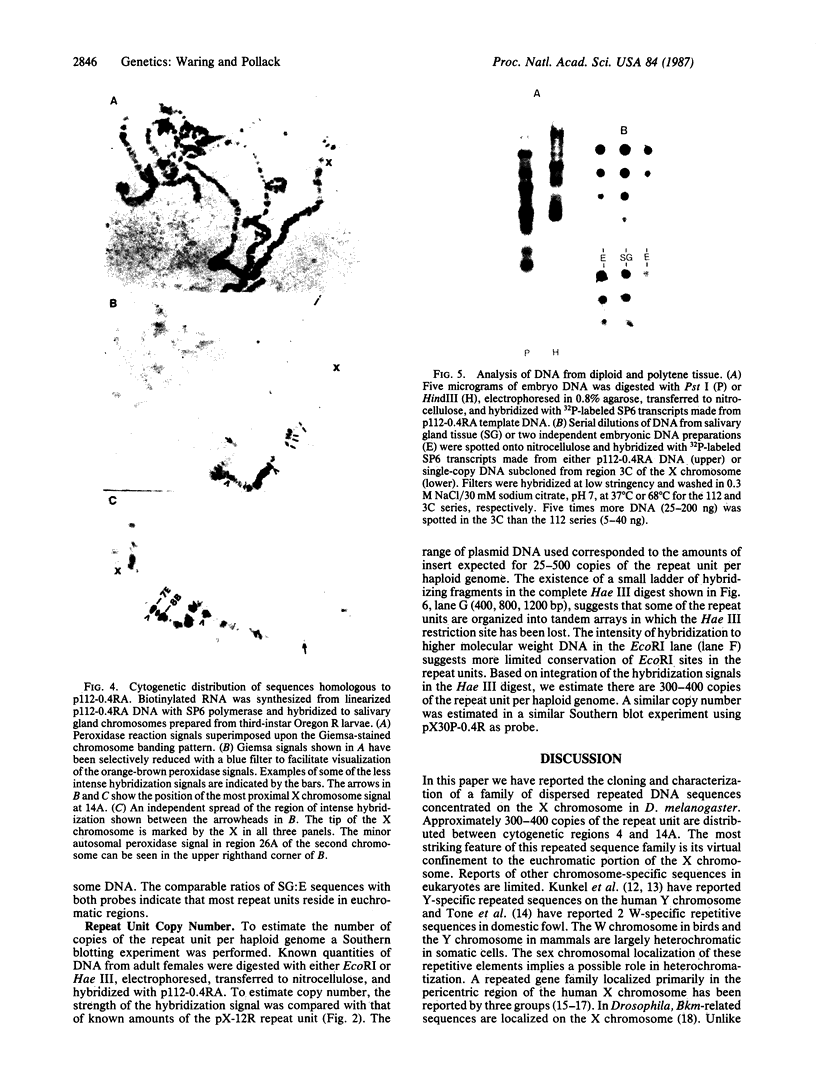
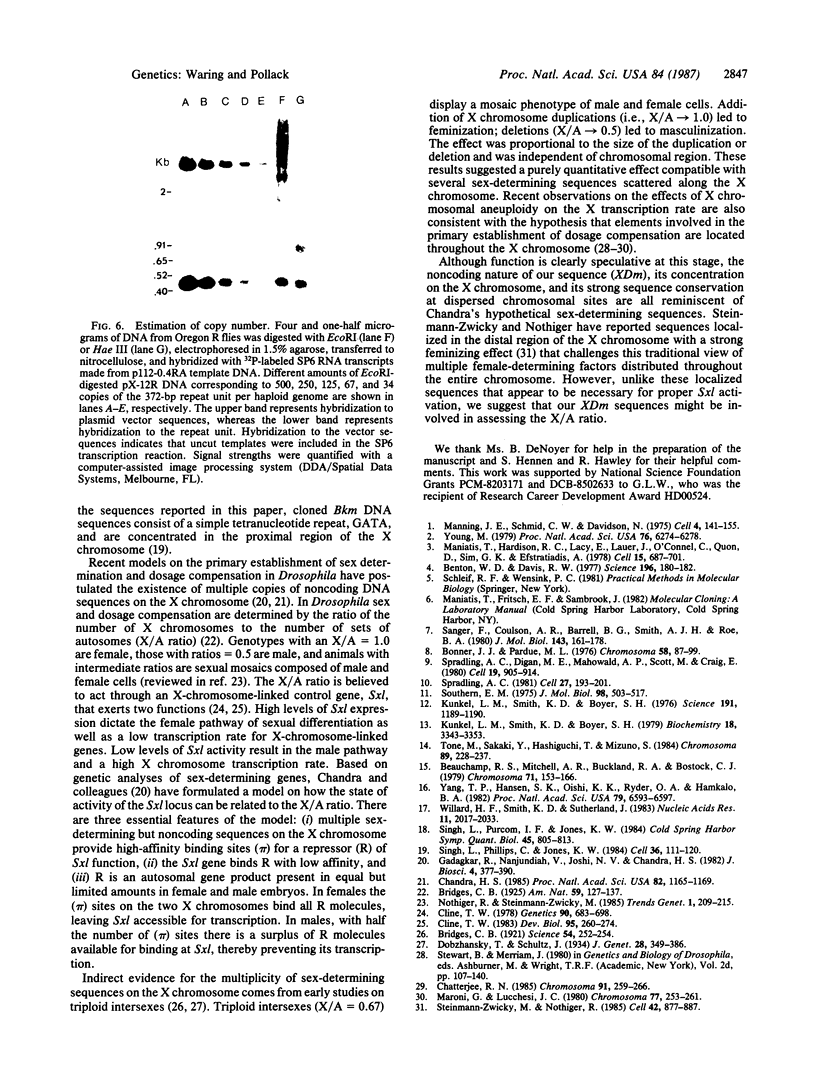
Images in this article
Selected References
These references are in PubMed. This may not be the complete list of references from this article.
- Beauchamp R. S., Mitchell A. R., Buckland R. A., Bostock C. J. Specific arrangements of human satellite III DNA sequences in human chromosomes. Chromosoma. 1979 Feb 21;71(2):153–166. doi: 10.1007/BF00292820. [DOI] [PubMed] [Google Scholar]
- Benton W. D., Davis R. W. Screening lambdagt recombinant clones by hybridization to single plaques in situ. Science. 1977 Apr 8;196(4286):180–182. doi: 10.1126/science.322279. [DOI] [PubMed] [Google Scholar]
- Bonner J. J., Pardue M. L. Ecdysone-stimulated RNA synthesis in imaginal discs of Drosophila melanogaster. Assay by in situ hybridization. Chromosoma. 1976 Oct 12;58(1):87–99. doi: 10.1007/BF00293443. [DOI] [PubMed] [Google Scholar]
- Bridges C. B. TRIPLOID INTERSEXES IN DROSOPHILA MELANOGASTER. Science. 1921 Sep 16;54(1394):252–254. doi: 10.1126/science.54.1394.252. [DOI] [PubMed] [Google Scholar]
- Chandra H. S. Sex determination: a hypothesis based on noncoding DNA. Proc Natl Acad Sci U S A. 1985 Feb;82(4):1165–1169. doi: 10.1073/pnas.82.4.1165. [DOI] [PMC free article] [PubMed] [Google Scholar]
- Chatterjee R. N. X chromosomal organisation and dosage compensation. In situ transcription of chromatin template activity of X chromosome hyperploids of Drosophila melanogaster. Chromosoma. 1985;91(3-4):259–266. doi: 10.1007/BF00328221. [DOI] [PubMed] [Google Scholar]
- Cline T. W. The interaction between daughterless and sex-lethal in triploids: a lethal sex-transforming maternal effect linking sex determination and dosage compensation in Drosophila melanogaster. Dev Biol. 1983 Feb;95(2):260–274. doi: 10.1016/0012-1606(83)90027-1. [DOI] [PubMed] [Google Scholar]
- Cline T. W. Two closely linked mutations in Drosophila melanogaster that are lethal to opposite sexes and interact with daughterless. Genetics. 1978 Dec;90(4):683–698. doi: 10.1093/genetics/90.4.683. [DOI] [PMC free article] [PubMed] [Google Scholar]
- Kunkel L. M., Smith K. D., Boyer S. H. Human Y-chromosome-specific reiterated DNA. Science. 1976 Mar 19;191(4232):1189–1190. doi: 10.1126/science.1257744. [DOI] [PubMed] [Google Scholar]
- Kunkel L. M., Smith K. D., Boyer S. H. Organization and heterogeneity of sequences within a repeating unit of human Y chromosome deoxyribonucleic acid. Biochemistry. 1979 Jul 24;18(15):3343–3353. doi: 10.1021/bi00582a022. [DOI] [PubMed] [Google Scholar]
- Maniatis T., Hardison R. C., Lacy E., Lauer J., O'Connell C., Quon D., Sim G. K., Efstratiadis A. The isolation of structural genes from libraries of eucaryotic DNA. Cell. 1978 Oct;15(2):687–701. doi: 10.1016/0092-8674(78)90036-3. [DOI] [PubMed] [Google Scholar]
- Manning J. E., Schmid C. W., Davidson N. Interspersion of repetitive and nonrepetitive DNA sequences in the Drosophila melanogaster genome. Cell. 1975 Feb;4(2):141–155. doi: 10.1016/0092-8674(75)90121-x. [DOI] [PubMed] [Google Scholar]
- Maroni G., Lucchesi J. C. X-chromosome transcription in Drosophila. Chromosoma. 1980;77(3):253–261. doi: 10.1007/BF00286051. [DOI] [PubMed] [Google Scholar]
- Sanger F., Coulson A. R., Barrell B. G., Smith A. J., Roe B. A. Cloning in single-stranded bacteriophage as an aid to rapid DNA sequencing. J Mol Biol. 1980 Oct 25;143(2):161–178. doi: 10.1016/0022-2836(80)90196-5. [DOI] [PubMed] [Google Scholar]
- Singh L., Phillips C., Jones K. W. The conserved nucleotide sequences of Bkm, which define Sxr in the mouse, are transcribed. Cell. 1984 Jan;36(1):111–120. doi: 10.1016/0092-8674(84)90079-5. [DOI] [PubMed] [Google Scholar]
- Singh L., Purdom I. F., Jones K. W. Conserved sex-chromosome-associated nucleotide sequences in eukaryotes. Cold Spring Harb Symp Quant Biol. 1981;45(Pt 2):805–814. doi: 10.1101/sqb.1981.045.01.099. [DOI] [PubMed] [Google Scholar]
- Southern E. M. Detection of specific sequences among DNA fragments separated by gel electrophoresis. J Mol Biol. 1975 Nov 5;98(3):503–517. doi: 10.1016/s0022-2836(75)80083-0. [DOI] [PubMed] [Google Scholar]
- Spradling A. C., Digan M. E., Mahowald A. P., Scott M., Craig E. A. Two clusters of genes for major chorion proteins of Drosophila melanogaster. Cell. 1980 Apr;19(4):905–914. doi: 10.1016/0092-8674(80)90082-3. [DOI] [PubMed] [Google Scholar]
- Spradling A. C. The organization and amplification of two chromosomal domains containing Drosophila chorion genes. Cell. 1981 Nov;27(1 Pt 2):193–201. doi: 10.1016/0092-8674(81)90373-1. [DOI] [PubMed] [Google Scholar]
- Steinmann-Zwicky M., Nöthiger R. A small region on the X chromosome of Drosophila regulates a key gene that controls sex determination and dosage compensation. Cell. 1985 Oct;42(3):877–887. doi: 10.1016/0092-8674(85)90284-3. [DOI] [PubMed] [Google Scholar]
- Tone M., Sakaki Y., Hashiguchi T., Mizuno S. Genus specificity and extensive methylation of the W chromosome-specific repetitive DNA sequences from the domestic fowl, Gallus gallus domesticus. Chromosoma. 1984;89(3):228–237. doi: 10.1007/BF00295004. [DOI] [PubMed] [Google Scholar]
- Willard H. F., Smith K. D., Sutherland J. Isolation and characterization of a major tandem repeat family from the human X chromosome. Nucleic Acids Res. 1983 Apr 11;11(7):2017–2033. doi: 10.1093/nar/11.7.2017. [DOI] [PMC free article] [PubMed] [Google Scholar]
- Yang T. P., Hansen S. K., Oishi K. K., Ryder O. A., Hamkalo B. A. Characterization of a cloned repetitive DNA sequence concentrated on the human X chromosome. Proc Natl Acad Sci U S A. 1982 Nov;79(21):6593–6597. doi: 10.1073/pnas.79.21.6593. [DOI] [PMC free article] [PubMed] [Google Scholar]
- Young M. W. Middle repetitive DNA: a fluid component of the Drosophila genome. Proc Natl Acad Sci U S A. 1979 Dec;76(12):6274–6278. doi: 10.1073/pnas.76.12.6274. [DOI] [PMC free article] [PubMed] [Google Scholar]




